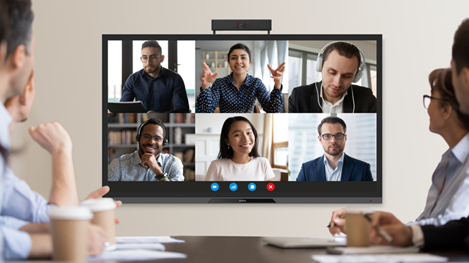Meetings are an integral part of every organization. No matter how large or small a meeting is, everyone has a unique perspective to bring to the table. If one of these perspectives is left unexpressed, there’s the possibility of losing the added value.
Engaged employees are vital to having productive and successful meetings. For several reasons, such as a quiet and reflective conversational style, a fuzzy meeting framework, or inadequate engagement tools, some employees may not be fully engaged, or engaged at all, during meetings. With remote working and collaboration tossed into the mix, more challenges with communication and engagement during meetings are presented.
We've compiled some tips to get your team more engaged, as well as some tools we think could help.
Set a Clear Framework
Before scheduling meetings, define the structure of the meeting – the reason for the meeting, those that will be attending, what is to be discussed, what you hope to achieve at the end of the meeting, and how long it’s going to take.
A clear meeting structure can foster a productive routine. It can reduce meeting fillers as much as possible, and cut unnecessary time-wasting on minor points. This clear framework can be shared with your team before the meeting to help them prepare and understand the expectations of the meeting. If someone has a question, as that they raise their hand or wait until the end of the meeting so that you aren't taken completely off track.
Extremely long meetings (hello, Zoom fatigue) can exhaust people and kill productivity. Ensure to keep meetings fast-paced and to the point.
Assign Meeting Responsibilities
Naturally, people want to feel good about themselves and value appreciation from others. It’s even better when it is from those they work with and in the presence of others. When people feel like they are an important part of something, they want to contribute more.
There’s probably no better way to make your team members feel like an important part of a meeting than to assign responsibilities to them, even if it’s the smallest responsibility.
Keep participants actively involved by assigning them simple tasks such as setting up the display, keeping track of time, jotting down some important notes, taking account of all attendees, and so on. These may seem like tiny details, but they go a long way in increasing engagement and productivity during meetings.
Mix it up – Stand up
While it may seem that sitting down during meetings is the comfortable and ideal thing to do, recent studies show that attendees who are standing up show higher levels of engagement and are more creative in brainstorming.
While standing, there’s a sense of urgency which probably makes the brain work faster than it would while sitting. Standing up daily can prevent meeting attendees from zoning out. Observe the turn the meeting is taking – if employees are responsive or not – and do the necessary.
Some of the team working remotely? Ensure your meeting room has the right equipment and a good quality conferencing camera so everyone feels like they are in the room.
Foster Discussion
Many people dislike meetings because they don’t feel like they have a real voice. Help them feel like their input and thoughts are valued. The more they talk, the more involved and engaged they will be.
First, this can be done by setting meeting goals as a team. When you set the goals for the meeting with the rest of the team, it gives everyone a chance to contribute their ideas because they know exactly where the meeting is going.
Another way of fostering discussions is to offer incentives and rewards. They really don't have to be fancy, as long as it shows that their efforts are appreciated. It helps to keep them engaged or even motivate them to attend the meetings in the first place. During the meeting, deliberately listen and look out for who might be slightly signaling that they would like to enter the conversation and engage them. Just make sure you're unmuted.

Request Feedback
At the end of the meeting, gather feedback about what the team liked or disliked about the meeting. This is important, as it not only helps you realize how you can improve the meetings, but also make employees feel like their opinions are important.
End with a very quick round of feedback or retrospective to allow you to improve the quality of your meetings continuously. The whole point is to get the participant's views on the meeting. After the feedback has been gathered, it is important to consider the points made and incorporate them into the following meetings. We are all navigating this new normal way of working together.
Conclusion
Some people believe that meetings are an utter waste of time, and hardly anything is accomplished. Most of the time this happens because of the way different team members set their expectations. Oftentimes, some fail to make meetings inclusive for all of the team members involved.
Teams should aim at building an atmosphere where there is an effective exchange of important information and ideas. The best outlet for this is team or employee meetings. There is a need to improve meeting atmospheres and engage employees more.
Try out these tips – and you'll see more energized and engaged people, ready to work together and push your ideas and projects forward.
Want to learn more about some of our tools that help foster better remote collaboration?
Check out our 4K conferencing camera or our interactive touch displays.
Written by: Caitlin Paterson on Tuesday, June 15, 2021